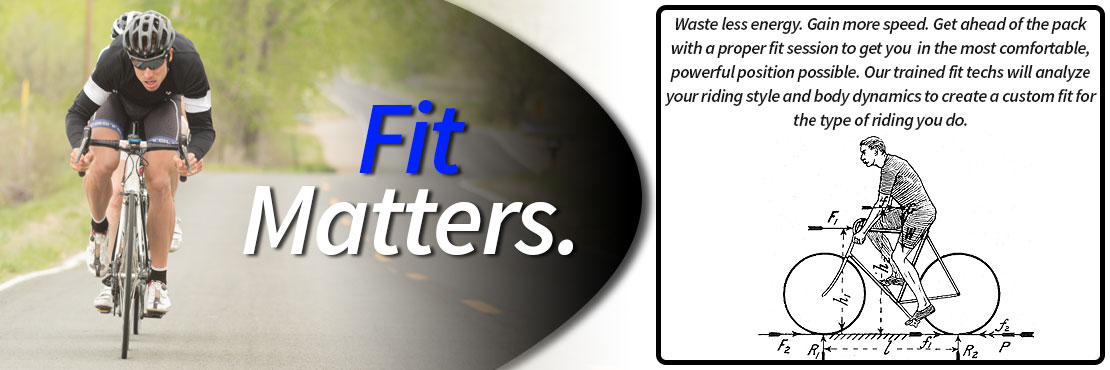
Serious cyclists, are aware (sometimes painfully so) that there are only three main contact points between your body and the bicycle. Hands and handlebars, butt and saddle, as well as feet and pedals. Since the comfort and output of the rider is often governed by these contact points, problems in any one of these areas can have massive implications.
At Hart's Cyclery we believe the most overlooked contact point—feet and pedals—specifically, cleat placement and position are the starting point for a comfortable fit. When we fit a rider, our basic goal surrounding the feet is quite simple; create less pressure on the foot, find the optimal leverage to spin, and get the foot, knee and hip all in one line. It sounds really simple on paper, but in reality there are only about four inputs a fitter can change on a rider’s feet—including custom insoles and/or custom shoes. Cleat position and placement is one of the most important steps in the fit process as it affects the other areas of bike fit quite dramatically. So much so, in fact, that our staff always sets the rider’s feet up as the first step of the fit. Cleat position can drastically change the rider’s fore and aft positioning on the saddle. Proper cleat placement also helps the cyclist pedal more efficiently, often times generating an increase in power while reducing fatigue and potential for injury.
These videos give more details:
"Competitive cyclists in search of marginal gains should be comprehensively screened for anatomical and biomechanical abnormalities before Bike fit or positional set-up. Efficient, injury-free cycling is reliant on pedaling symmetry, which is reliant on efficient lower-limb biomechanics, correct foot function, and a stable, level pelvis. The structure and function of the foot dictate how effectively pedal forces are transmitted via the foot/pedal Interface down to the cranks, and potentially how deleterious forces are transmitted up the kinetic chain, creating pelvic disruption. Leg length inequality must be clearly differentiated into anatomical and functional and then addressed appropriately to achieve a successful outcome. Biomechanical problems can be addressed successfully only if they are recognized and diagnosed. Ideally, the screening process should involve a sports medicine therapist with specialist knowledge of cycling biomechanics and foot function. In competition, marginal gains can represent the difference between success and failure." Nick Dinsdale
Read the quote again. In all the research we have done this fit expert stands out as a leader in the field of "research based cyclist fitting, based on anatomical and biomechanical performance".
Interested in Reading More About Bike Fit?
Here are a few more articles we've found helpful over the years.
Biomechanical Screening
by Nick Dinsdale BSc (Hons), MSc, MSS T and Nicola Dinsdale BSc (Hons), MSST
Bike Fit Guidelines
By Nick Dinsdale BSc (Hons), MSc, MSS T and Nicola Dinsdale BSc (Hons), MSST
Cleat Positioning
Basic variables that professional bike fit specialists can change to correct potential problems
